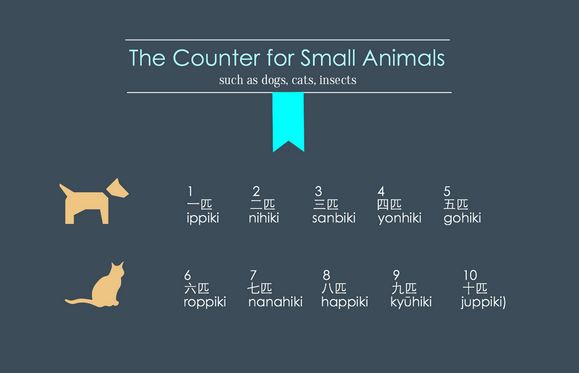
One of the beautiful (or painful, depending on how you look at it) aspects of the Japanese language is its complex system of numbers and counting methods. For starters, there are two commonly used systems of numbers–often referred to as the Sino-Japanese numbers and the native Japanese numbers–that are used in different contexts, as well as a seemingly limitless number of counter words. Confused yet?
So how the heck do you become a master of Japanese numbers? Well, a good way to start is by checking out this handy-dandy infographic put out by Japanese Video Cast!
Here’s a typical conversation between a student of Japanese and his/her teacher:
Student: “OK, how do you say ‘one’ in Japanese?”
Teacher: “Well, it depends on what you’re counting.”
Student: “Wait–you mean there’s more than one way to say ‘one’!?”
While the basic way to count to ten in Japanese is “ichi, ni, san…,” the game changes as soon as you start trying to count something; i.e., quantify objects. To do so, you must attach a specific “counter” onto the end of a numeric prefix depending on what it is you’re counting–different objects are grouped together by similar qualities. For example, long, thin objects are counted using the counter “-hon,” cars are counted using the counter “-dai,” and birds as well as rabbits are counted using the counter “-wa.” Some people find it comparable to the way we say “three cups of coffee” or “two scoops of ice cream” in English. Just trying to learn what objects go with which counters is a chore in itself!
But that’s not all, because some words undergo a kind of phonological assimilation when certain counters are attached, resulting in a completely different pronunciation! Forget “ichihon;” when counting using the counter “-hon,” for instance, you actually have to say “ippon, nihon, sanbon…” and so on.
But practice makes perfect, and we promise that you’ll get the hang of things (eventually). To aid you in your quest, we’d like to share this magnificent infographic from Japanese Video Cast with you all. We’ve broken it up into different sections for ease of viewing, but the full, undivided image can be found here. San, ni, ichi…OK, let’s start counting!
▼ First, the basics: otherwise known as the Sino-Japanese numbers
▼ Also known as the native Japanese numbers
▼ Here we begin looking at some basic counters
Did you find any patterns in these examples?
By the way, my favorite trick for learning new vocabulary is to tape lists or sticky notes of new words onto my bathroom mirror. That way, I’m sure to see them and get a little studying done while brushing my teeth at the very least!
Source: Design Taxi
Images: Japanese Video Cast

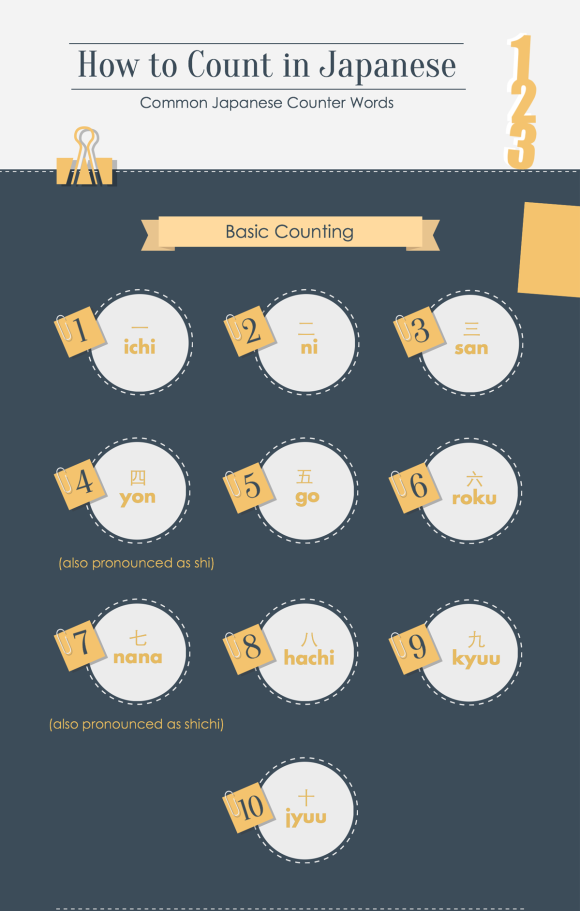
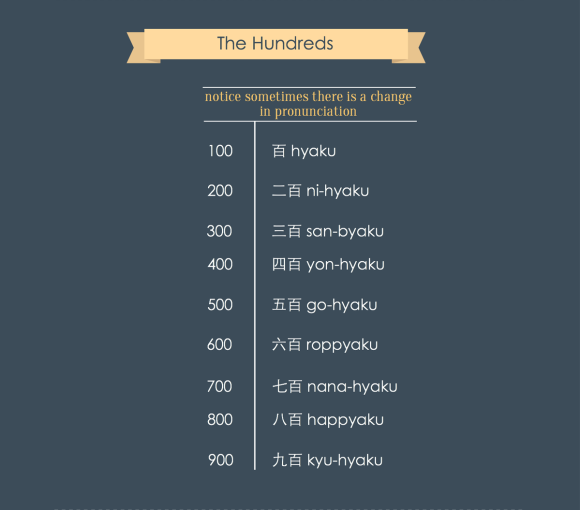
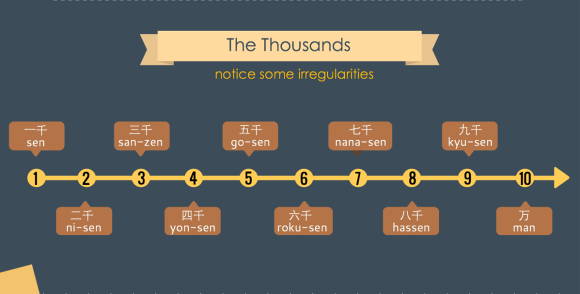
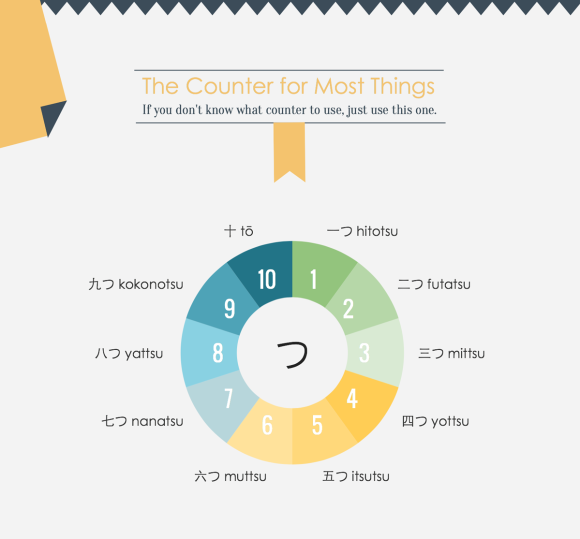

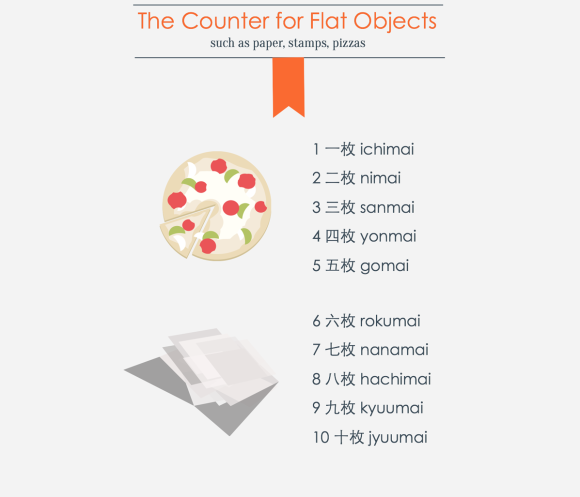
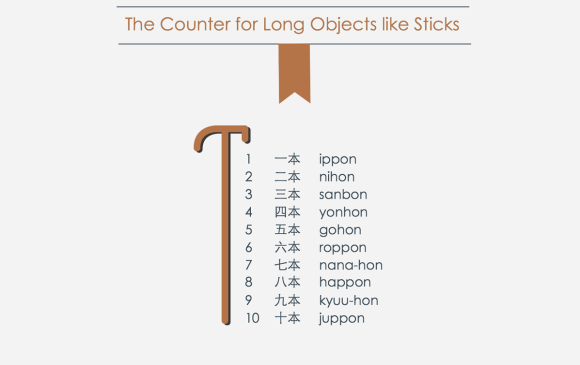
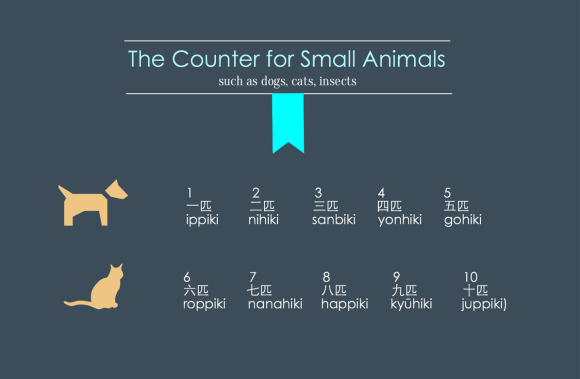
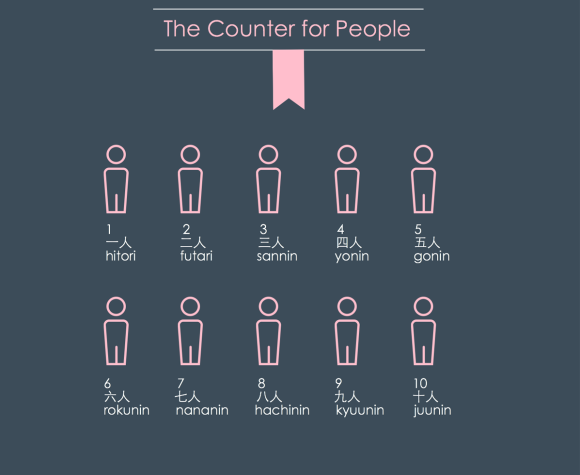
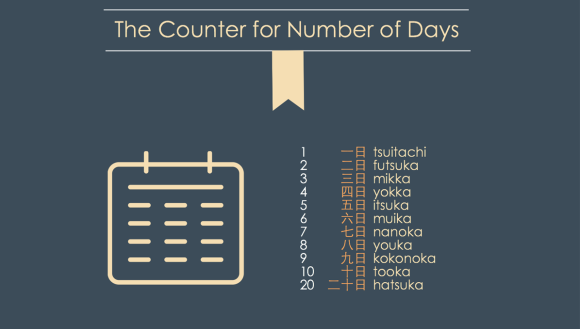
 Here’s a funny anecdote about Japanese kindergartners (maybe) yelling “killing me” in unison
Here’s a funny anecdote about Japanese kindergartners (maybe) yelling “killing me” in unison Seven mistakes foreigners make when speaking Japanese—and how to fix them
Seven mistakes foreigners make when speaking Japanese—and how to fix them We know it’s hard, Super Mario fans, but please resist the urge to punch this Tokyo Station sign
We know it’s hard, Super Mario fans, but please resist the urge to punch this Tokyo Station sign Beef bowl chain Yoshinoya’s historic first store to close, special countdown site launched!
Beef bowl chain Yoshinoya’s historic first store to close, special countdown site launched! Muji’s garlic sauce potato chips are perfectly pungent enough to warrant an investigation
Muji’s garlic sauce potato chips are perfectly pungent enough to warrant an investigation New Hello Kitty and friends summer kimono are perfect for Sanrio-loving parents, kids, and sisters
New Hello Kitty and friends summer kimono are perfect for Sanrio-loving parents, kids, and sisters McDonald’s Japan’s new Cheese Cheese Double Cheeseburger makes a different ingredient stand out
McDonald’s Japan’s new Cheese Cheese Double Cheeseburger makes a different ingredient stand out This super cheap, super Japanese-looking Tokyo hotel is a hit with foreign travelers
This super cheap, super Japanese-looking Tokyo hotel is a hit with foreign travelers Practical Zelda Tears of the Kingdom merch is here to be Hyrule-helpful in your daily life【Pics】
Practical Zelda Tears of the Kingdom merch is here to be Hyrule-helpful in your daily life【Pics】 Japan’s first-ever Yakult cafe serves a rare probiotic ice cream in the shadow of a famous castle
Japan’s first-ever Yakult cafe serves a rare probiotic ice cream in the shadow of a famous castle Starbucks releases an official green tea chai latte with special Japanese ingredients
Starbucks releases an official green tea chai latte with special Japanese ingredients Japanese public toilet tours become popular with foreign tourists in Tokyo
Japanese public toilet tours become popular with foreign tourists in Tokyo Uniqlo brings cultural cuteness to Edo animals T-shirt line with Japanese history’s greatest artists
Uniqlo brings cultural cuteness to Edo animals T-shirt line with Japanese history’s greatest artists Immigration raid at anime convention ends with five Japanese cosplayers being arrested overseas
Immigration raid at anime convention ends with five Japanese cosplayers being arrested overseas Cup Noodle maker’s super-easy recipe turns instant noodles into quick okonomiyaki【Recipe】
Cup Noodle maker’s super-easy recipe turns instant noodles into quick okonomiyaki【Recipe】 2nd line of Casio watch rings hits Japanese capsule machines and we got the secret one!
2nd line of Casio watch rings hits Japanese capsule machines and we got the secret one! Starbucks releases special matcha Frappuccino made with Japan’s first matcha leaves of the year
Starbucks releases special matcha Frappuccino made with Japan’s first matcha leaves of the year Yes, our new smartphone looks like at least two Studio Ghibli anime characters, Sharp says
Yes, our new smartphone looks like at least two Studio Ghibli anime characters, Sharp says Japanese man tells friend to wear suit to wedding party, so he comes as Mobile Suit Gundam
Japanese man tells friend to wear suit to wedding party, so he comes as Mobile Suit Gundam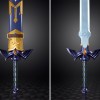 Life-size vibrating Legend of Zelda Master Sword for sale from Nintendo【Photos】
Life-size vibrating Legend of Zelda Master Sword for sale from Nintendo【Photos】 Mt. Fuji-blocking screen installed as response to bad tourist manners to be in place by next week
Mt. Fuji-blocking screen installed as response to bad tourist manners to be in place by next week Cool capsule toys recreate how Japan navigated trains in pre-smartphone days【Photos】
Cool capsule toys recreate how Japan navigated trains in pre-smartphone days【Photos】 Tokyo’s beckoning cat temple asks foreign tourists to stop writing on the beckoning cats they buy
Tokyo’s beckoning cat temple asks foreign tourists to stop writing on the beckoning cats they buy Foreigner’s request for help in Tokyo makes us sad for the state of society
Foreigner’s request for help in Tokyo makes us sad for the state of society McDonald’s new Happy Meals offer up cute and practical Sanrio lifestyle goods
McDonald’s new Happy Meals offer up cute and practical Sanrio lifestyle goods New Tokyo restaurant charges higher prices to foreign tourists than Japanese locals
New Tokyo restaurant charges higher prices to foreign tourists than Japanese locals “Mt. Fuji convenience store” issues apology for bad tourist manners, adds multilingual signs
“Mt. Fuji convenience store” issues apology for bad tourist manners, adds multilingual signs Tokyo’s famous Lost in Translation hotel is closed
Tokyo’s famous Lost in Translation hotel is closed Japanese ramen restaurants under pressure from new yen banknotes
Japanese ramen restaurants under pressure from new yen banknotes Bad tourist manners at Mt Fuji Lawson photo spot prompts Japanese town to block view with screens
Bad tourist manners at Mt Fuji Lawson photo spot prompts Japanese town to block view with screens Sales of Japan’s most convenient train ticket/shopping payment cards suspended indefinitely
Sales of Japan’s most convenient train ticket/shopping payment cards suspended indefinitely Sold-out Studio Ghibli desktop humidifiers are back so Totoro can help you through the dry season
Sold-out Studio Ghibli desktop humidifiers are back so Totoro can help you through the dry season Japanese government to make first change to romanization spelling rules since the 1950s
Japanese government to make first change to romanization spelling rules since the 1950s Ghibli founders Toshio Suzuki and Hayao Miyazaki contribute to Japanese whisky Totoro label design
Ghibli founders Toshio Suzuki and Hayao Miyazaki contribute to Japanese whisky Totoro label design Tokyo’s most famous Starbucks is closed
Tokyo’s most famous Starbucks is closed Doraemon found buried at sea as scene from 1993 anime becomes real life【Photos】
Doraemon found buried at sea as scene from 1993 anime becomes real life【Photos】 One Piece characters’ nationalities revealed, but fans have mixed opinions
One Piece characters’ nationalities revealed, but fans have mixed opinions We asked a Uniqlo employee what four things we should buy and their suggestions didn’t disappoint
We asked a Uniqlo employee what four things we should buy and their suggestions didn’t disappoint McDonald’s Japan reminds everyone that French fries are vegetables to celebrate Vegetable Day
McDonald’s Japan reminds everyone that French fries are vegetables to celebrate Vegetable Day Is pachinko headed for extinction in Japan? Studies reveal huge drop in players, hall operators
Is pachinko headed for extinction in Japan? Studies reveal huge drop in players, hall operators The future is (almost) now with Mitsubishi’s proposed “Aerial Display” hologram tech
The future is (almost) now with Mitsubishi’s proposed “Aerial Display” hologram tech Try not to chuckle about this important Japanese discovery regarding great tits (the birds)
Try not to chuckle about this important Japanese discovery regarding great tits (the birds) Behind the counter: what it’s like to work as All Nippon Airways ground staff【Video】
Behind the counter: what it’s like to work as All Nippon Airways ground staff【Video】 Cost of uneaten ehomaki sushi rolls in 2022 estimated to be over one billion yen
Cost of uneaten ehomaki sushi rolls in 2022 estimated to be over one billion yen 10,000 or 1,0000? Japanese schools are starting to move commas on big numbers, but why?
10,000 or 1,0000? Japanese schools are starting to move commas on big numbers, but why? 10 tips to stop you from embarrassing yourself in China
10 tips to stop you from embarrassing yourself in China Metal Gear Solid is now real with awesome “real infiltration game” opening in Tokyo【Video】
Metal Gear Solid is now real with awesome “real infiltration game” opening in Tokyo【Video】 The method to save a seat in Japan shows how awesomely safe the country is【Video】
The method to save a seat in Japan shows how awesomely safe the country is【Video】 A self-driving car that delivers ramen is Nissan’s newest automotive innovation【Video】
A self-driving car that delivers ramen is Nissan’s newest automotive innovation【Video】 Japanese convenience stores want you to be honest and request to pay higher sales tax rate
Japanese convenience stores want you to be honest and request to pay higher sales tax rate Deer in Nara Park mysteriously disappear during this year’s shikadamari season
Deer in Nara Park mysteriously disappear during this year’s shikadamari season Tsushima no Miya Station: The Japanese train station open only two days a year
Tsushima no Miya Station: The Japanese train station open only two days a year Can you figure it out? Japanese man creates puzzling perpetual motion machine from paper【Video】
Can you figure it out? Japanese man creates puzzling perpetual motion machine from paper【Video】
Leave a Reply